Learning how to raise pigs for meat is a great option for any homestead or farm wanting to become more self-sustainable. But choosing the breed and tailoring the care takes a bit of know-how. Read on for 12 tips for raising pigs for meat.

This post was originally written and published in 2015 by Amy from Autumn Creek Ranch and has since been updated to include my interview with “Pork” Rhyne Cureton for even more information. Enjoy!
Natural Remedies Made Simple
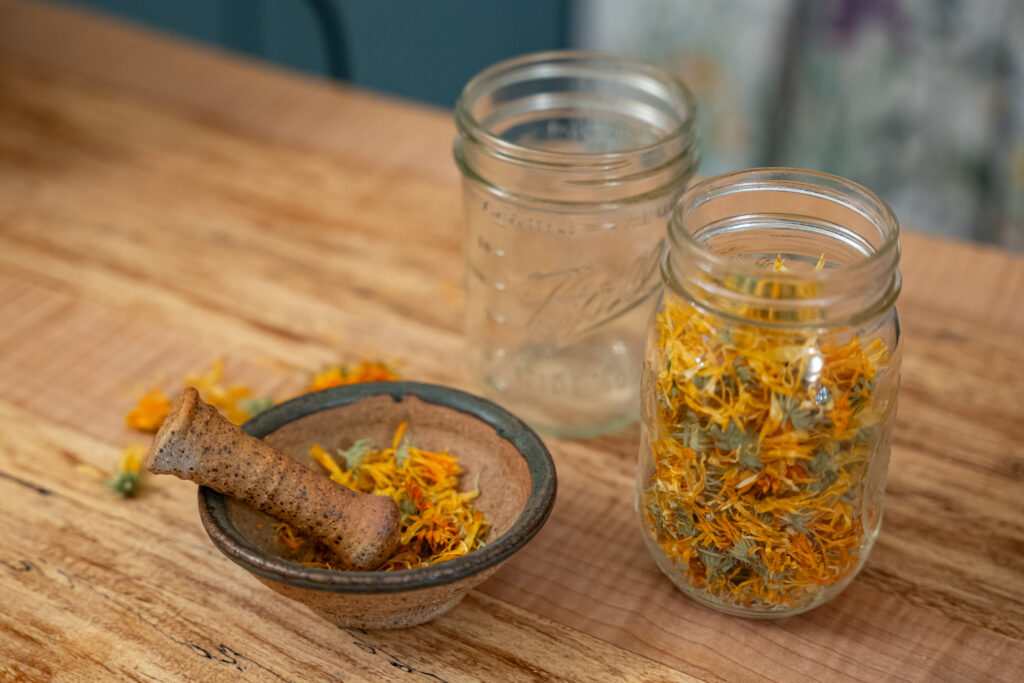
Start your home apothecary with confidence—even if you’re brand new. Learn how to choose the right herbs for your body using the simple principles of herbal energetics.
Discover how warming, cooling, drying, and moistening herbs affect your body—so you can stop guessing and start making remedies that actually work.
In previous podcasts I’ve discussed how I raised American Guinea Hogs and why we chose that specific breed. And in another podcast I discussed whether or not we thought the Guinea Hogs were worth it to raise for meat, including whether or not we’ll raise them again.
Today’s podcast guest (Pioneering Today Podcast episode #331) is “Pork” Rhyne and I was fortunate enough to have met him at the Homesteader’s of America Conference. I couldn’t wait to get him on the podcast to discuss all things pigs!
“Pork” Rhyne works as an international agricultural educator and niche-meat marketing expert. He’s dedicated his life to training and educating experienced and beginning farmers on business and marketing. (Read to the bottom of this post on where you can find Pork online!)
If you’re not at a point where you’re ready to raise your own meat, namely pork since that’s the topic of the day, I want to recommend Butcher Box.
Butcher Box happens to be a sponsor of the Pioneering Today Podcast and they have a special going on now through Jan 20th, 2022 called the New Year’s Bundle. In this bundle, for first-time subscribers only, you will get 7 lbs of meat for FREE in your first box! Go to butcherbox.com/pioneeringtoday to sign up!
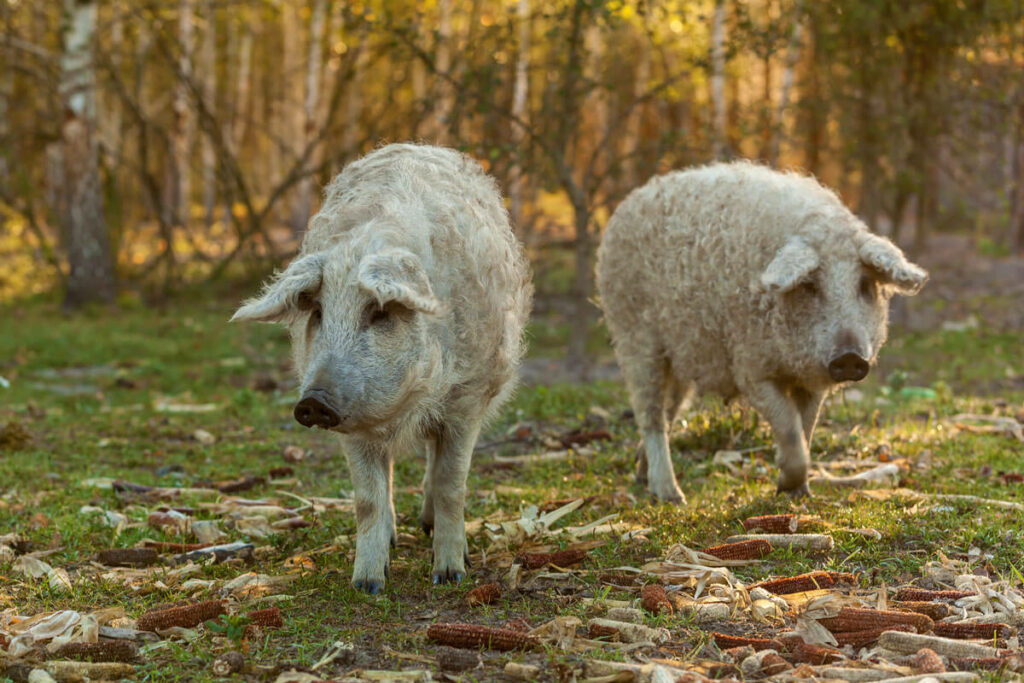
Table of Contents[Hide][Show]
Why I Love Raising Pigs
I really think pigs are one of the easiest animals to raise on a homestead. They mature quite a bit faster than a beef cow and render way more meat (and lard) than a chicken or rabbit (and frankly pulled pork, fresh bacon, lard rendered at home, and salt-cured hams are just amazing!!!).
Subscribe to Melissa K. Norris!
Get updates on the latest posts and more from Melissa K. Norris straight to your inbox.
We use your personal data for interest-based advertising, as outlined in our Privacy Notice.
Other Animals to Raise
Before jumping into raising pigs, for more information on raising your own meat, be sure to check out this post on planning your livestock and raising enough meat for a year’s worth of food. As well as the following for other animal-specific posts:
- Raising backyard egg-laying chickens
- Raising backyard meat birds
- How to raise a dairy cow
- Raising meat rabbits
- Raising sheep (for fiber)
- A guide for raising goats
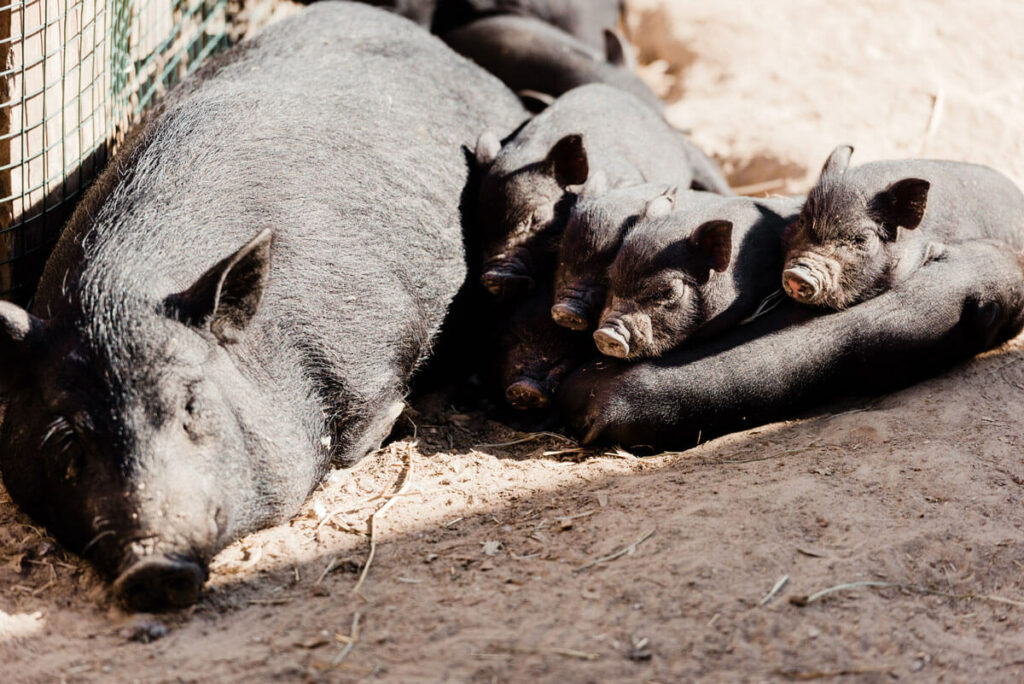
12 Tips for Raising Pigs
So maybe you have thought about raising a pig (or two) and don’t know where to start? Here are some tips and pointers I hope will help you on your way to raising your own delicious pork.
Buy Piglets
For someone interested in just raising a few pigs a year for meat it’s easier to buy piglets than raise your own breeding stock.
Piglets vary in price due to location, time of year (they are more expensive in Spring when kids in 4-H are trying to find them), and by breed.
At the original time of the writing of this post (2015) piglets were being sold for about $125/each but they could be found as low as $75 depending on market demand. (Prices are likely higher now.)
Age Matters
The industry standard for selling baby pigs is 6 weeks of age. However, we sell our piglets at 8 weeks of age because we find that piglets allowed to remain with the sow those two extra weeks have stronger immune systems and do not need to be fed starter feed.
Of course, that means we have to feed the sow extra to keep up her condition but we think healthier piglets are worth it.
If you can find piglets that have been allowed to nurse a bit longer it’s worth the extra cost as it will save you in both your feed bill as well as potential health concerns for the piglet.
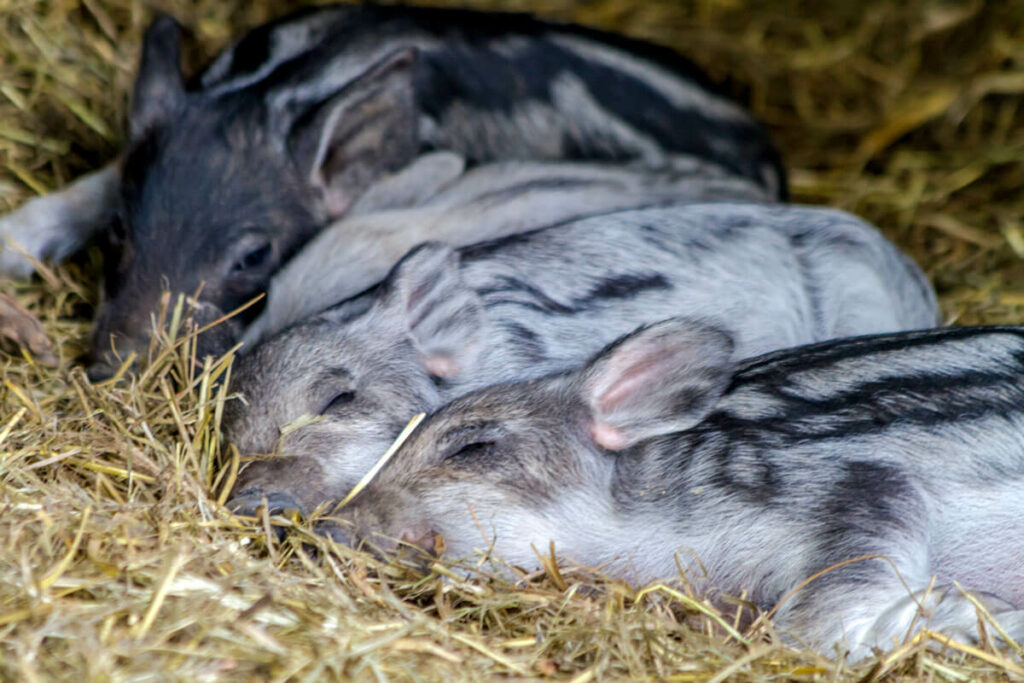
Space Considerations
Before you bring home piglets you need to have a pen and some sort of shelter for them. I will talk more about fencing in a minute but there are some considerations to take into account when planning your pen.
If the pen is small, the piglets will grow faster because they will not have as much room to exercise and the ground can get really destroyed.
Also, in a smaller area, parasites have more of a chance to grow. Finally, a small pen in the Spring when the weather is wet can result in a great big mud pit.
However, as Pork Rhyne discusses in the podcast interview, this doesn’t mean you must have space to free-range or pasture your pigs. Raising your own pigs is a huge step up from buying commercially-raised pork products, even if you don’t have the ideal living conditions for those pigs.
We prefer to use rotating areas in the warmer months and really large areas closer to the house in the colder months (we actually put pigs on our garden areas during the winter so they can till them up and fertilize them in preparation for Spring planting).
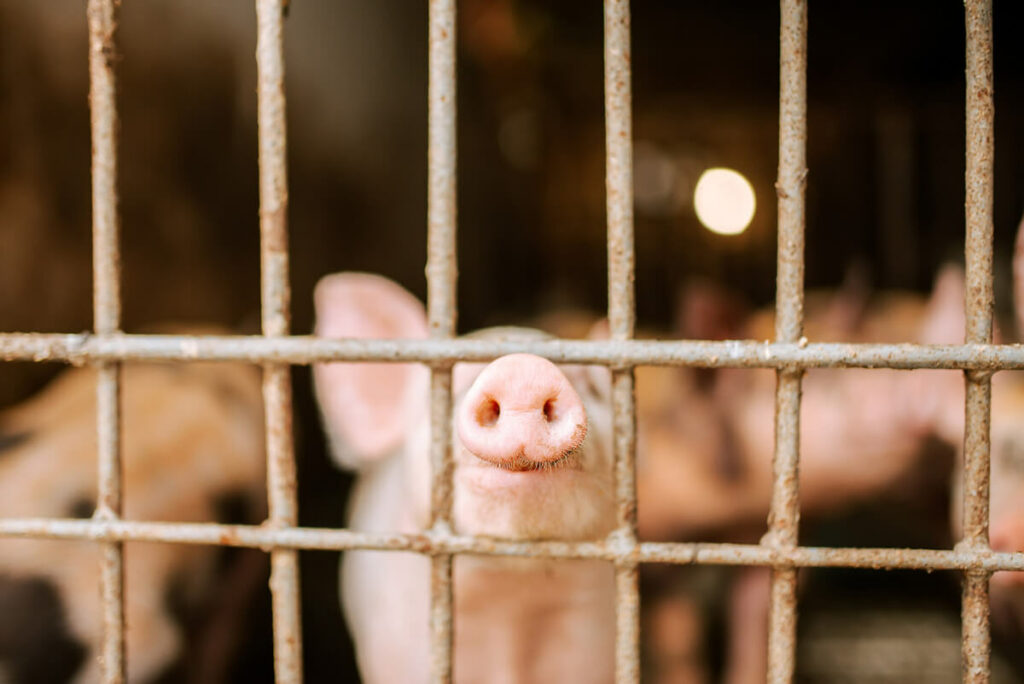
Fencing
When piglets are young, it’s better for them to be in a cattle panel, hog panel, or pallet pen.
Electric netting, string, or wire don’t work well with small piglets because they can get out (spoken from lots of experience and a piglet that took off for two weeks in the surrounding woods of our property).
We keep piglets in a small cattle panel pen with electric wire on the bottom until they are about 12-15 weeks old and then we transfer them into pens made with electric string or wire until they reach butchering weight.
Usually, by 12-15 weeks they are trained to the electric and are large enough not to mess with going through it. It’s good to have an exit way or gate that is not electric, however. Pigs can be so well trained to electric fencing that when we want to move them they will not go near a place that there USED to be electric fencing.
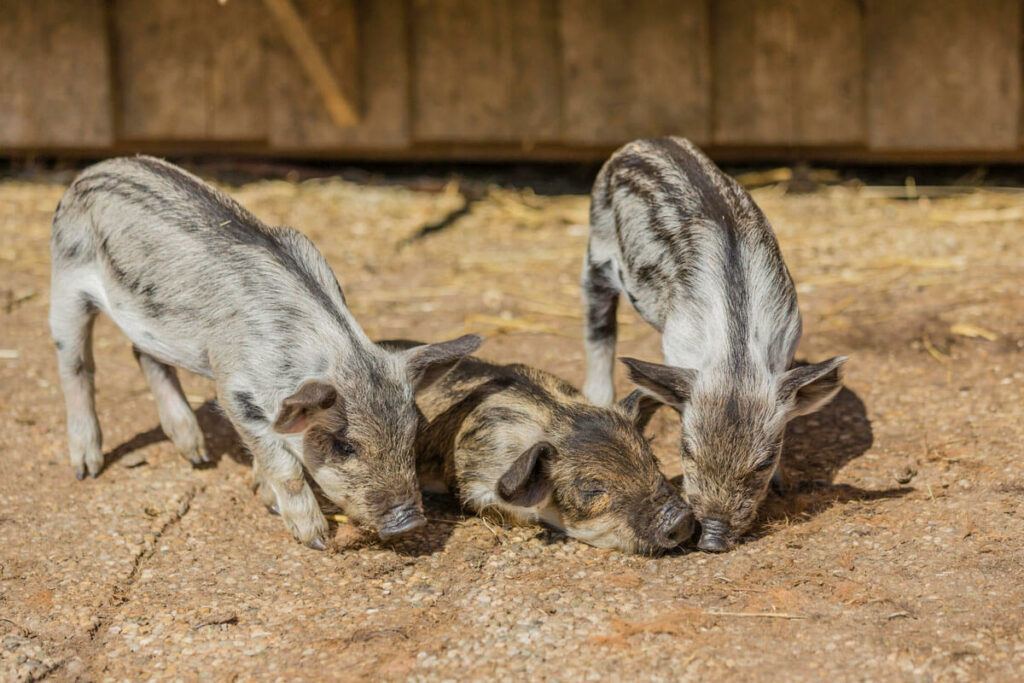
Feeding Pigs
There are lots of possible ways to feed your pig. The easiest is to buy a commercial hog grower. Pigs grow fastest on this type of ration. Unfortunately, most commercial hog grower formulas contain corn and soy which is likely GMO.
A lot of commercial feeds also contain medications which may nor may not be needed for your particular animal.
Since we don’t like giving medication unnecessarily to our animals, another option is to make your own feed from a grain and protein source or find a natural pre-made feed in your area.
Here’s what Pork Rhyne has to say about feeding pigs… There’s so much controversy on what to feed your pigs, everything from going to your local bakery and feeding pigs day old bread, to only buying the best, organic, non-GMO feed.
There are so many people who are just starting to raise pigs who don’t actually know what a healthy pig looks like. So he recommends spending time with someone else who raises pigs to learn and get acclimated to how much pigs should eat, how their appetites vary based on the seasons, and what a healthy pig looks like.
We homesteaders love the alternative route, anytime we can DIY or have an alternative way of doing something, we’ll jump on it! I think it’s in our nature. But before diving into making your own pig feed, it’s important to understand the components of feed to know how to feed a pig in order to get a product with a fat:meat ratio you’re happy with when it comes time to butcher.
- Carbs – energy source, oftentimes corn or grain
- Protein source – soy beans, field beans, etc.
- Fiber/Minerals/etc – these will make up the rest of the feed to help keep the pigs healthy
Once you have the basic components of the feed down, it’s also important to know about your specific breed because each breed will have different carbohydrate and protein needs.
When it comes to American Guinea Hogs, they’re obesity prone so they need a lower carbohydrate diet to avoid getting too much fat on the hogs.
Pork Rhyne had a friend who was really disappointed with the amount of meat to fat ratio he got after butchering his pigs, but it turns out that he was feeding his pigs 16% crude protein throughout their whole life instead of reducing the protein prior to butchering.
Typically, about 2-3 months before slaughter, Pork Rhyne recommends reducing the amount of protein down to 12-14% and increasing the amount of carbohydrates to turn that energy into fat.
As I said above, this all varies between breeds and is different for herefords, heritage breeds, commercial breeds, etc.
In addition to pre-made feed, pigs love all types of produce. You can even grow crops specifically for your pigs like mangels, forage turnips, beets, and pumpkin.
On our farm, we feed a locally sourced barley and peas combination with added swine minerals. Our pigs also get lots of fresh milk, table scraps, local apples and pumpkins.
Please do not feed your pigs bakery scraps and the like and expect a healthy pig with great tasting meat. You eat what your pig eats so quality matters.
Another example of ways to feed pigs is that Pork Rhyne has a friend who has gone to Chipotle (the fast-food restaurant chain) and picked up beans that weren’t sold to consumers to feed his pigs.
I’m all for being resourceful! Just be sure the food you’re getting is not post-consumer (meaning it wasn’t served first to a customer, then thrown in the trash because that will spread diseases to your pigs) and be sure there’s no pork in the product.
One thing I love to do is to source my feed as locally as possible. We have a granary that’s about an hour away that has a non-GMO stance, and also tries to source their grain as locally as possible as well. For money saving tips on purchasing from your local granary, check out Stocking Up on Animal Feed (+ How Much to Feed Animals).
Also know, if you’re feeding your pigs spent grain (like brewers grain you might get from a brewery), about 80% of it is water. For example, if that grain was dry, it would contain about 29% protein, whereas once the grain is wet (or spent), it only contains only 7.7% crude protein.
Spent grain also gets moldy very quickly, so Pork Rhyne recommends this as an addition to a diet, not the primary source.
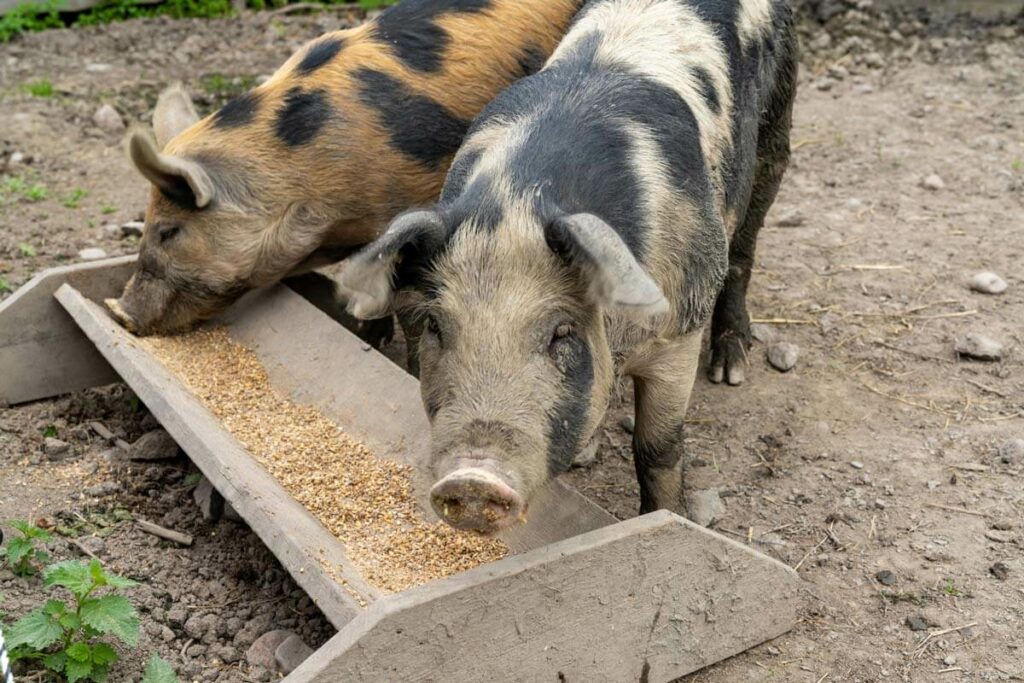
Demand vs. Measured Feeding
Another thing to consider when raising pigs is whether to set up a self-feeder and let the pigs eat whenever they want or feed them a set amount each day.
There are pros and cons for both. Demand feeding makes the daily workload smaller except on the day when you have to fill the pig feeder. Also, if pigs always have food available they will be less likely to root as much and so your ground stays in better shape. Pigs who are demand-fed also tend to grow faster so your time to maturity is less.
The problem with demand feeding is that pigs can eat a LOT of food and this can get expensive, especially as the pigs get older.
We have found that if you are only raising one or two pigs demand feeding is the way to go. When you are raising 10 or more is when it can become cost-prohibitive.
We give each of our piglets 5 lbs of their grain mixture each day. In addition to this, they get milk, table scraps, and produce.
This allows us to have market weight pigs at around 8 months or so.
Medicines & De-Worming (DIY De-Wormer)
I am not a fan of chemical de-wormers because of the mutations and resistances they create.
On our farm, we have found garlic to be a much more effective de-wormer anyway.
We add approximately 1 lb of garlic granules to one ton of feed.
In addition, oregano oil is also superb at fighting parasites and infection.
Finally, we keep geranium essential oil handy for bleeding (pigs can get in scuffles) and tea tree oil for cuts and scrapes.
To Castrate or Not?
Castrating pigs is a controversial issue. There are many who find the practice cruel and unnecessary but others who say it needs to be done to prevent boar taint.
If you are raising two male pigs you will need to determine whether you want to have this procedure done.
However, when you are raising piglets of the opposite sex it’s wise to go ahead and castrate. When we first started raising piglets we were told they wouldn’t start to breed until they were 9 months old. Since we butcher at 8 months we didn’t think we needed to castrate.
Bad advice and we ended up with pregnant market pigs. We now castrate all male piglets raised for meat. We have found Bach’s Rescue Remedy very helpful in the process – it keeps both pigs and the person doing the castration calm.
Breeds Matter
Different breeds of pigs have different qualities, including differences in size, meat quality, and temperament.
These are things you will want to investigate when choosing your piglets prior to bringing them home.
We raise heritage breeds of pigs (Gloucester Old Spot, American Guinea Hog, Tamworth) because of their docile and friendly temperaments and excellent meat quality.
The American Guinea hog is a much smaller breed of pig and will not yield a conventional carcass weight but because of their easy handling ability and chef-quality meat, it’s a tradeoff we are willing to make.
Pork Rhyne’s first pigs were actually a heritage breed called “large blacks” and “red wobble”, he’s also raised some crosses and commercial pigs.
200 years ago pigs weren’t getting fed the diets they now get. They were low-input animals, just like chickens, where they were getting fed scraps from the kitchen or garden, free-ranging and ruminating, etc.
For many years, pigs were the “fail-safe”. If a crop had a bad harvest one year, families would always have pigs to sell to make ends meet.

Butcher Weight & Hanging Weight
Most heritage pigs are butchered when they weigh around 180-250 lbs live. This will result in a hanging weight (meat and bones minus the head, feet and organs) ranging from 160-225 lbs.
How much meat you end up with in your freezer is totally dependent on the types of cuts you choose during processing.
It’s important to understand that heritage breed pigs grow slower than commercial pigs.
Usually heritage breeds take approximately 8 months to reach approximately 280lbs. The lard pigs take up to a year or a year and a half to reach butchering weight (which sometimes, depending on the breed, won’t be as heavy).
But commercial hogs reach 280-300lbs in just 6 months. So you can see why commercial hogs have become more popular with large farms.
For more exact information on each individual breed, download this chart from the Livestock Conservancy Organization.
Know what you want to raise pork for before choosing your breed. Many breeds are much better for things like bratwursts, sausage, charcuertery, etc. whereas other breeds are going to give you your hams, pork chops, and large roasts.
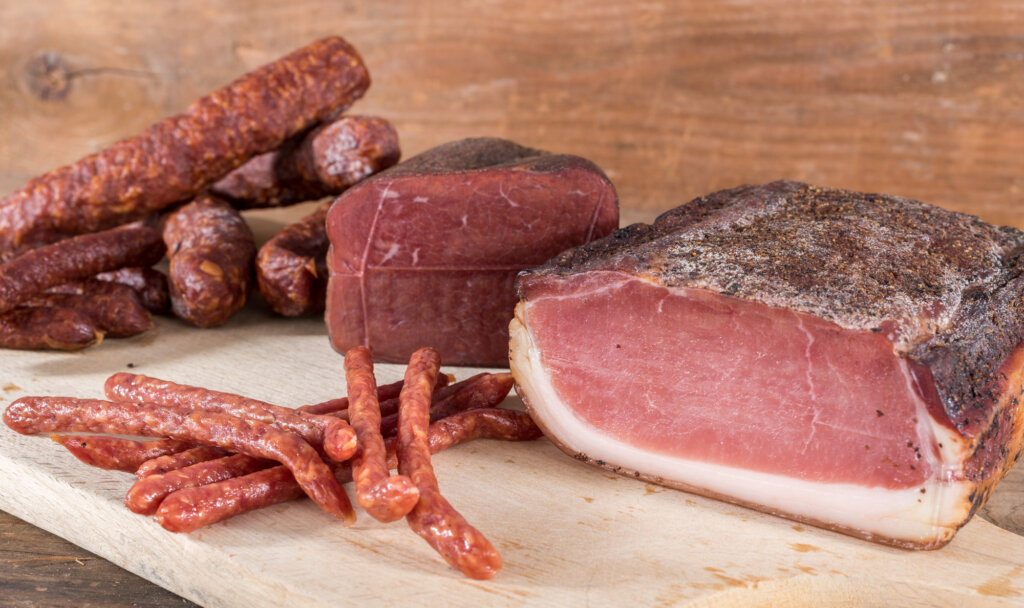
Should You Hire a Butcher?
We have butchered many a pig on our farm. Once you learn to do it its not that hard, but the first time can be a bit intimidating.
The whole process takes about 3 days. The first day is the kill and hang, the second is skinning and cutting up the pieces, the third is usually sausage processing.
A downside to butchering yourself is that unless you know how to cure bacon and ham you won’t end up with those cuts (you will have fresh ham which is really good but not like traditional cured ham).
The benefits of butchering large animals yourself is the know-how and the cost savings. Traditionally, having a hog butchered costs anywhere from $150-$250 depending on processing and curing.
Taste is Superior
By raising your own pigs you control what they eat which makes for a healthier product for your family.
Also, raising pigs is a lot of fun and I love to watch their antics. However, I find the best reason for raising pork is the taste. Once you try it you will never want supermarket pork again.
More About Amy
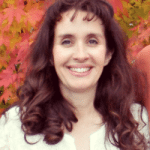
Amy is is a wife and mother of 18 children. In addition to parenting and homeschooling their mega family, they also run a small family farm, which they affectionately call “Autumn Creek Ranch.” They love the work of Joel Salatin (me, too!) and have patterned much of what they do by his example.
Do you have a question about raising pigs? You can email Amy at [email protected].
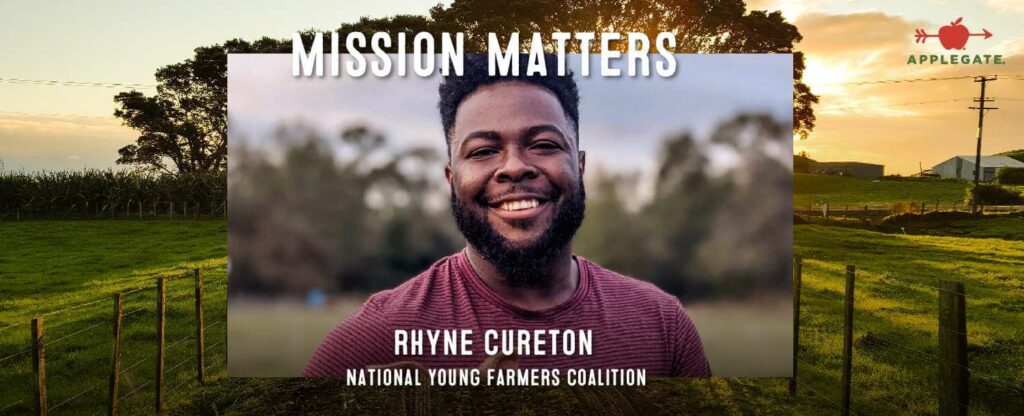
More About “Pork” Rhyne Cureton
Be sure to listen to the podcast (starting at minute 41) to hear about Pork Rhyne’s work in third world countries through the company EATBETA – Evangelizing Africa Through Business Empowerement in a Transformation of Agriculture.
- Pork Rhyne TV on YouTube
- Homesteaders of America
- Email: [email protected]
[fusebox_transcript]
Other Articles You May Enjoy
- Planning Your Livestock for a Year’s Worth of Meat Per Person
- Our Food Production Plan & How to Plan for Livestock
- 5 Tips on Raising Livestock for Food
- Decoding mRNA in Meat
- Keeping a Family Milk Cow- 8 Things You Need to Know
- A Guide to Raising Goats
- Everything You Need to Know About Raising Rabbits for Meat
- How to Keep Animals Cool in Hot Weather
- Maximizing Your Homestead for Profit & Production (With Joel Salatin)
- Commonly Believed Homesteading Myths
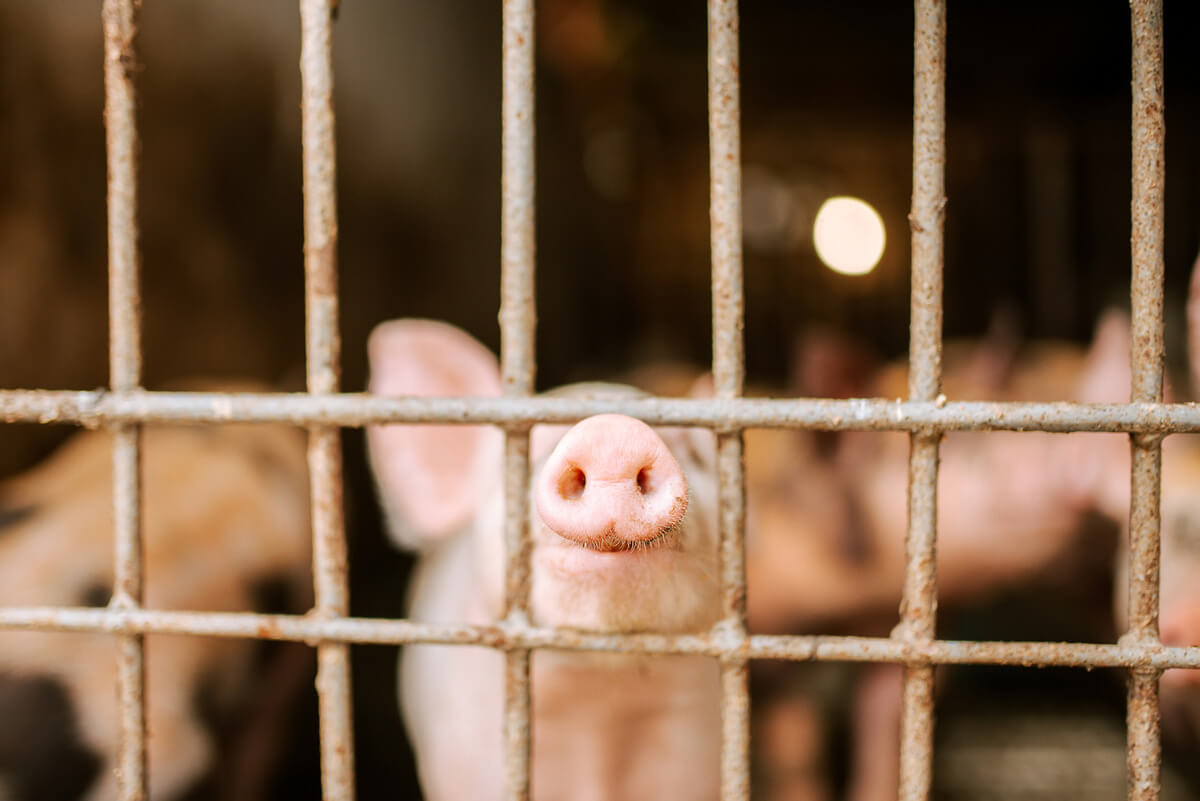
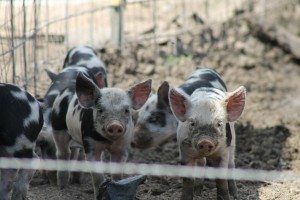
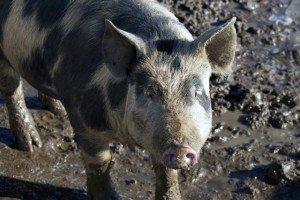
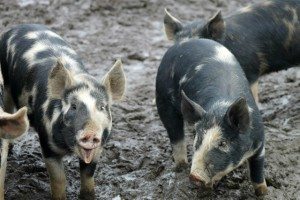
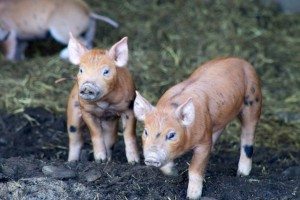
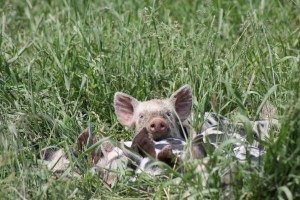
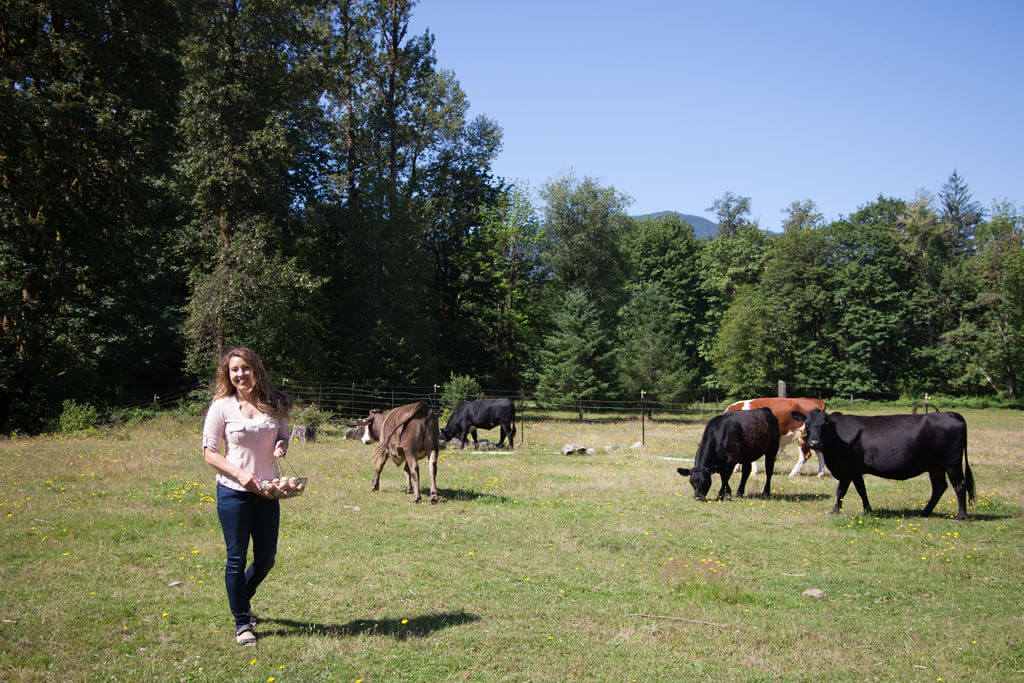
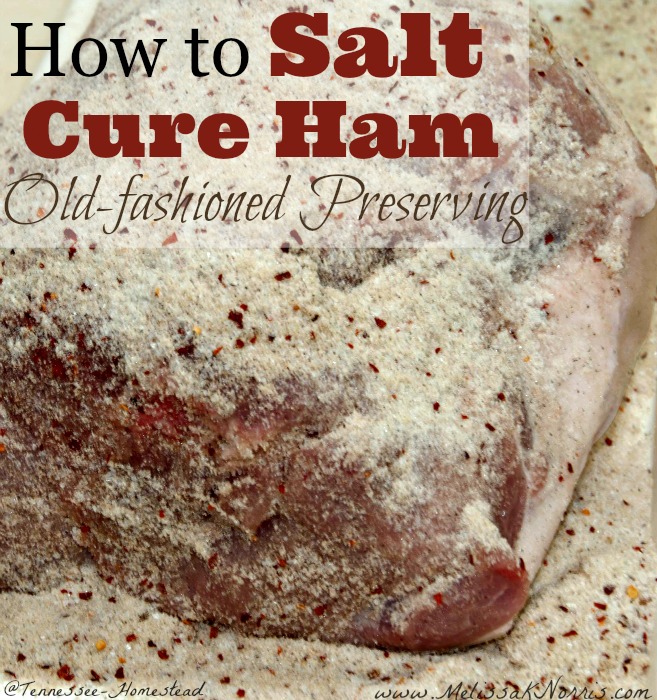
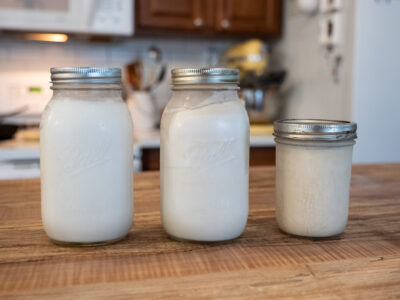







I’d like to know how to perfectly raise pigs. Please help me.
Thank you so much for your article. Very informative! I was wondering if you can raise two female piglets together and not have a bunch of fights? We will be Using a Horse stall to raise them in. The inside is 13 x 13 and the outside area is 13 feet wide and approximately 30 feet long. Will that be enough for two little piglets to grow up in?
Thanks for the information
very interesting and l know how to raise pigs.
18 children. Wow, my hats off to you.. 5 was enough for me. Thanks for the tips on pigs. Raised them on the farm when I was a child , but I was not really involved in the process.. I started with 2 this year and it certainly is a learning experience. That meat better taste really good, because I’m not sure how cost effective this venture with turn out.. thanks again. Best regards, Robert
We are considering converting our chicken mansion into a pig pen. It is a 8×16 foot structure with metal roofing and 1/3 of it has walls and the other 2/3 chicken wire. Do you think this structure would be sufficient? Or do we need to add a larger gated pen around it? We would like to not only feed them as healthy as possible, but let them live humanely.
#1 thing you can do to TRULY improve quality of meat is to give them ROOM to move around. We gave our 4H hogs a full acre to move around in & the quality improvement of the meat was SHOCKING. We did it because we had the room. We did nothing else different than standard approach. We didn’t find out until later that that was the big improvement factor.
Thank you for all your valuable information. My husband and I are starting the adventure of raising our own pigs for meat and this was very helpful.
Thank you!
New to raisin hogs I’m about to be ready to bring my hog to the bucher. Is there anything special that i need to do before they go like feed wise or anything
What minererals do you use for the hogs?
Amy, thank you for the info. I would love more homesteading info. Do you have a newsletter or something similar.
I’m wondering how to market your raised pigs.
How much area do I need to fence for like 10 to 12 pigs area like two areas are three to have a garden area and then move them to another area
For 10 to 12 pigs you’ll need a decent sized area. Rule of thumb is at least 50 square feet PER pig.
Thanks for your assistance in pig breeding
Putting the pigs into your garden area implies that the pigpen is nearby. Do you have any problems with then trying to get into the garden during the summer growing season? I envision a group of hogs planning a jailbreak for fresh corn.
When the pigs are piglets we kept them near the garden to till up new ground for expanding the garden. Once they’re larger, we move them to the pasture. We’ve never had them get into the garden.
Hi, Thanks for the great article. I notice you start in the spring and butcher in the fall. Is it ok to buy in the fall or is it more expensive to raise through the winter months?
Just bought a mini farm and want to raise my children with chores and understanding where their food comes from.
Excited to get started.
Thank you,
Bobbie
Pigs need heat during the winter months and you’ll spend more on feed, plus they use more of their food to keep warm than they do growing so most folks do spring and butcher in the fall.
Helpful… Thanks..
I love your tips and I wish to become a pig farmer
Have you ever heard of trembles? We bought 4 pigs and 1 seems to have them? We were told she had some trauma when they seperated and weaned from their Mom.
we started to raise american guinea hogs, love this breed very docile friendly..we have a litter of 4..and just on july 30 another 3..no bites on selling any..do you have any suggestions.. i put ad in shoppers guide and craigslist not one call…i have never tasted meat of them yet..what are you raising and any hints you can give me..thanks have a great eve…dennis
Hi – we are raising two pigs for the first time. What herbal de-wormer have you been using? We don’t want to use the chemical de-wormers on the market.
what percentage of profit would raising 10 pigs bring me after spending most of my money on feed and other necessarry stuff..? am a begginer and i want to know how worth.
That depends on how much you spent on the pigs, your feed costs, and the going market rate in your area.
Thanks a lot for sharing , wish you can come over here in Uganda and educate us on how to keep pigs..I have about five so far but I really want to make it a real business
As a child on the farm, we had pigs, we scraped the hair on the pigs when butchering them.
My son got a pig & he skinned it, that was a first for both of us.
We do not have a butcher house, so he took the meat to a processor.
Who told us about the Brucella which causes Brucellosis.
We got over 200 pounds of finished meat.
Thanks for sharing. We just got our first 3 pigs. So much to learn but, you have been very helpful.
18 children ,
buy a tv!!!
wow congrats given.
home schooling, great our public schools are a mess
and my guess is God is also taught!!!
18 kids…..a really great family experience for parents and kids. Like to see a future president of America comes from T the familly!
When you say that you feed the piglets 5 pounds of feed per day, is that per piglet?
What is the brand of feeder that you use? Where can I buy one?
Hi Amy, we are raising our first pigs this spring. They will be 8 weeks when we get them. Live in Oregon, weather has been cold this year. Do we need to use heat lamps or are they old enough to be in outdoor pen
Cathy, how early are you getting your pigs? We live in Washington state and get ours the end of April. We don’t use a heat lamp at that time, but we make sure they can have a small stall (we use pallets to create a three sided shed with a roof) and straw so they can burrow in with one another and stay warm.
I did not realize that it was so important to feed your animals the right foods so that they grow correctly. The idea of demand feeding seems like a good way to keep the workload light and to help your animals grow as big and strong as possible. When raising animals for food, the kinds of food that they intake becomes a very important subject. Like you said, raising animals on your own makes the food much more enjoyable and healthier for your family.
What kind of pig do we buy?
We’ve been raising Hereford pigs for five years now and really like them.
Used to raise pigs when I was young. I still dislike most commercial pork as a result. You just can’t beat home-raised. Here’s a secret ingredient: sing to the pigs. They love the music and attention, and it helps keep their stress levels down.
I need information how to butcher pigs.
Thanks for a great article. I have been thinking about creating a homemade ration for our piglet. Would you mind expounding on this? Thank you!
Thank you for the easy to understand tips. I am hoping to start raising a couple of piglets next spring.
[…] 2. Buy 8-week-old Piglets […]
WE HAVE FAMILY THAT WANTS US TO SHARE THE COST OF THE PIGS THEY HAVE RAISED TO EAT !! ITS THE FIRST TIME, FOR THEM !! DO I HAVE TO WORRIE ABOUT IS THE MEAT SAFE TO EAT ?? CAN WE GET SICK ?? WE ARE 75 YEARS OLD !! THANKS GAIL
Gail,
As long as the meat is handled properly at butchering time it should be fine. We use a natural herbal wormer for our pigs. I’d ask them questions about the practices they’re using with the raising if you’re concerned.
Hi – we are raising two meat pigs for the first time. We are hesitant to use most de-wormers on the market. What herbal de-wormer do you use?
Is there a big difference about the weight of the pig when they travel from 1 place to another. .
This refer to when we sell the pig live weight basis. Thanks
Hi Melissa, I like the way you use God and Scripture in your books, podcasts and your website and Pioneering Today Academy. Leviticus chapter 11:7-8 reads and the swine though he divide the hoof, and be cloven footed, yet he cheweth not the cud he is unclean to you. Of their flesh ye shall not eat and their carcase shall ye not touch; they are unclean to you.
There are several verses in the New Testament (that’s the covenant I’m under) that I go by. This is something many people like to debate but for me and my house, we believe there are plenty of verses that don’t require sticking to the kosher outlines of the Old Testament for eating (just like we don’t make women isolate when they menstruate or call them unclean).
Matthew 15:17-20
“Do not ye yet understand, that whatsoever entereth in at the mouth goeth into the belly, and is cast out into the draught? But those things which proceed out of the mouth come forth from the heart; and they defile the man. For out of the heart proceed evil thoughts, murders, adulteries, fornications, thefts, false witness, blasphemies: These are the things which defile a man: but to eat with unwashen hands defileth not a man.” KJV
Mark 7:15-19
“There is nothing outside the man which can defile him if it goes into him; but the things which proceed out of the man are what defile the man. [” If anyone has ears to hear, let him hear.”] When he had left the crowd and entered the house, His disciples questioned Him about the parable. And He said to them, “Are you so lacking in understanding also? Do you not understand that whatever goes into the man from outside cannot defile him, because it does not go into his heart, but into his stomach, and is eliminated?” (Thus He declared all foods clean.) NASB
1 Timothy 4:1-5
“Now the Spirit speaketh expressly, that in the latter times some shall depart from the faith, giving heed to seducing spirits, and doctrines of devils; Speaking lies in hypocrisy; having their conscience seared with a hot iron; Forbidding to marry, and commanding to abstain from meats, which God hath created to be received with thanksgiving of them which believe and know the truth. For every creature of God is good, and nothing to be refused, if it be received with thanksgiving: For it is sanctified by the word of God and prayer.” KJV
Thank you so much for sharing all of this information. I’m going to be getting a pig or two in about 8 weeks and I’m looking into feeding them as healthy and cost effective as possible. I was wondering if you sprout the peas and barley mixture you mentioned. And I’m also wondering what swine minerals you use. Yours is the only article I’ve found so far that mentions milk in the diet and no commercial feed. Id love if you could share any more advice and info 🙂
Thanks so much for the info of raising your own pig..we are in the middle of it now…good to know I’m doing a pretty good job.
What is your opinion on feeding non GMO corn? I’ve been doing good that along with a pig feed and fresh veggies and fruit from the garden
Bobbie,
If it’s nonGMO corn than I think it’s fine to mix in with their feed. I like to have a balanced mixture of things we feed, so fresh veggies and fruit are awesome!
I need info on how to raise pigs for business. I have started with 2 a boar and a sow of the same family. They are 3 months old.
I’m aseu Michael from Uganda I have started small piggery farm but I have like much of your profile I would like to get more advice from you on how to run piggery farm.because my target is to be one of Uganda’s largest piggery farmer but I need alot of support advice from the experienced farmer’s
Thank you ! I just bought my 2 acre farm last February brought our first two feeders home today. They are7 week old yorkshire and Duroc cross and appear to be extremely healthy.
I want to do the best by them. Your artical is very simple and easy to understand. i will be following your suggestions. Again< a huge Thank You!
Is there a risk for bacteria in the garden area if you allow the pigs to stay there over the winter? I am very interested in moving them around, if possible! Also, we live in a very hilly area; what are your thoughts on letting them run up and down the hills?
You’re welcome Tessa! Ossabaw is a heritage breed isn’t it?
Amy very first time trying to raise anything need all the knowledge i can retrieve
Thank you for all these tips, Amy! We’re getting some Ossabaw pigs this August and this will be our first venture into pigs. So much to learn and this was so helpful!